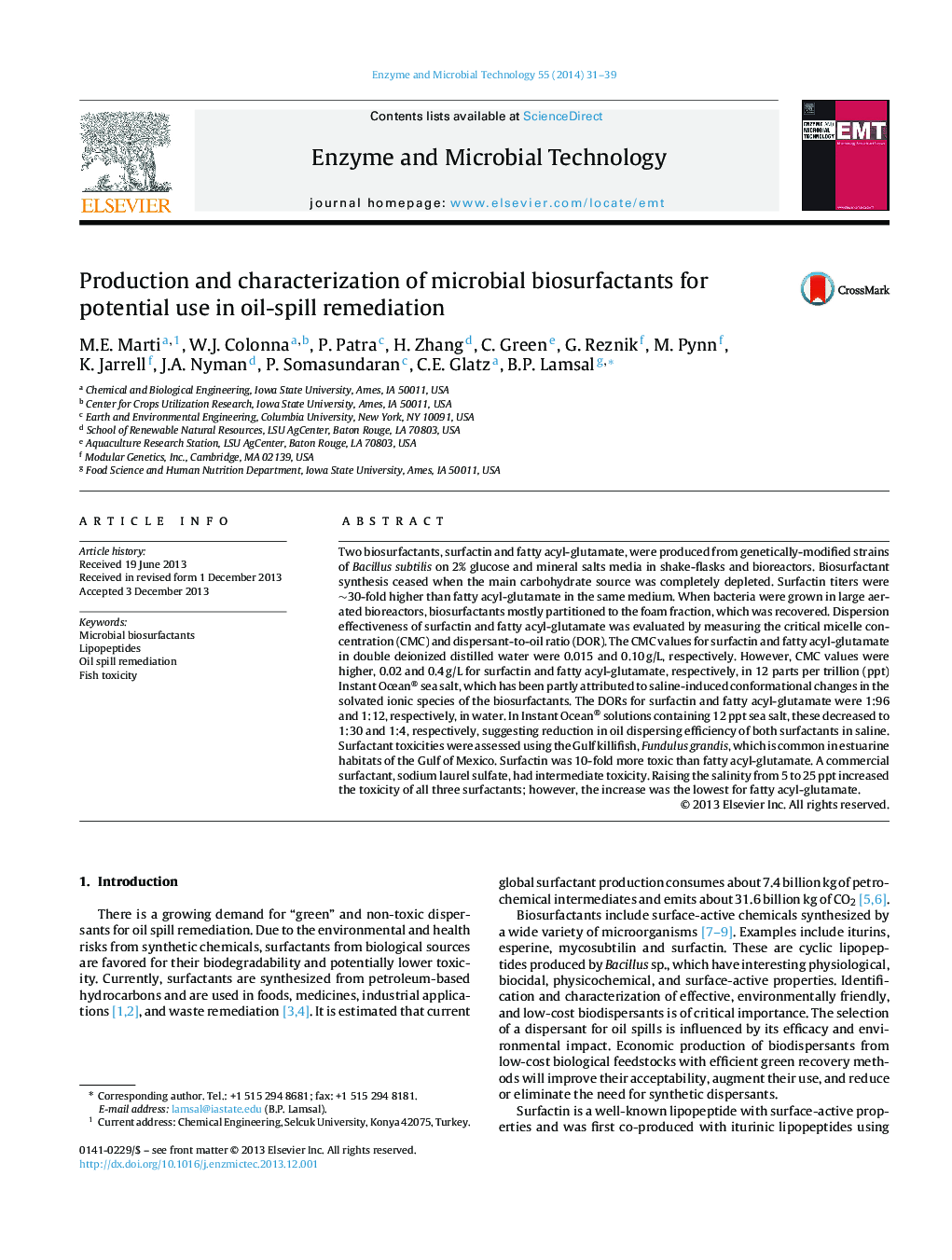| کد مقاله | کد نشریه | سال انتشار | مقاله انگلیسی | نسخه تمام متن |
|---|---|---|---|---|
| 17228 | 42653 | 2014 | 9 صفحه PDF | دانلود رایگان |
• Surfactants were produced microbially on biological substrate and purified to >90% purity.
• Surface active properties of biosurfactants indicated they could be utilized as oil dispersants.
• Toxicity of biosurfactants to fish larvae in water and in saline varied from moderate to high.
Two biosurfactants, surfactin and fatty acyl-glutamate, were produced from genetically-modified strains of Bacillus subtilis on 2% glucose and mineral salts media in shake-flasks and bioreactors. Biosurfactant synthesis ceased when the main carbohydrate source was completely depleted. Surfactin titers were ∼30-fold higher than fatty acyl-glutamate in the same medium. When bacteria were grown in large aerated bioreactors, biosurfactants mostly partitioned to the foam fraction, which was recovered. Dispersion effectiveness of surfactin and fatty acyl-glutamate was evaluated by measuring the critical micelle concentration (CMC) and dispersant-to-oil ratio (DOR). The CMC values for surfactin and fatty acyl-glutamate in double deionized distilled water were 0.015 and 0.10 g/L, respectively. However, CMC values were higher, 0.02 and 0.4 g/L for surfactin and fatty acyl-glutamate, respectively, in 12 parts per trillion (ppt) Instant Ocean® sea salt, which has been partly attributed to saline-induced conformational changes in the solvated ionic species of the biosurfactants. The DORs for surfactin and fatty acyl-glutamate were 1:96 and 1:12, respectively, in water. In Instant Ocean® solutions containing 12 ppt sea salt, these decreased to 1:30 and 1:4, respectively, suggesting reduction in oil dispersing efficiency of both surfactants in saline. Surfactant toxicities were assessed using the Gulf killifish, Fundulus grandis, which is common in estuarine habitats of the Gulf of Mexico. Surfactin was 10-fold more toxic than fatty acyl-glutamate. A commercial surfactant, sodium laurel sulfate, had intermediate toxicity. Raising the salinity from 5 to 25 ppt increased the toxicity of all three surfactants; however, the increase was the lowest for fatty acyl-glutamate.
Journal: Enzyme and Microbial Technology - Volume 55, 5 February 2014, Pages 31–39
